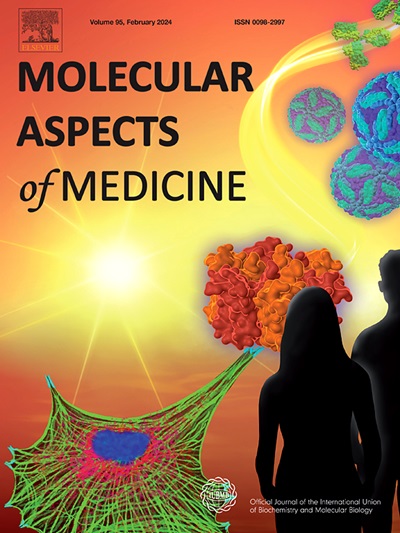Decoding driver and phenotypic genes in cancer: Unveiling the essence behind the phenomenon
IF 10.3
2区 医学
Q1 BIOCHEMISTRY & MOLECULAR BIOLOGY
引用次数: 0
Abstract
Gray hair, widely regarded as a hallmark of aging. While gray hair is associated with aging, reversing this trait through gene targeting does not alter the fundamental biological processes of aging. Similarly, certain oncogenes (such as CXCR4, MMP-related genes, etc.) can serve as markers of tumor behavior, such as malignancy or prognosis, but targeting these genes alone may not lead to tumor regression. We pioneered the name of this class of genes as "phenotypic genes". Historically, cancer genetics research has focused on tumor driver genes, while genes influencing cancer phenotypes have been relatively overlooked. This review explores the critical distinction between driver genes and phenotypic genes in cancer, using the MAPK and PI3K/AKT/mTOR pathways as key examples. We also discuss current research techniques for identifying driver and phenotypic genes, such as whole-genome sequencing (WGS), RNA sequencing (RNA-seq), RNA interference (RNAi), CRISPR-Cas9, and other genomic screening methods, alongside the concept of synthetic lethality in driver genes. The development of these technologies will help develop personalized treatment strategies and precision medicine based on the characteristics of relevant genes. By addressing the gap in discussions on phenotypic genes, this review significantly contributes to clarifying the roles of driver and phenotypic genes, aiming at advancing the field of targeted cancer therapy.

解码癌症的驱动和表型基因:揭示现象背后的本质
白发,被广泛认为是衰老的标志。虽然白发与衰老有关,但通过基因靶向逆转这一特征并不会改变衰老的基本生物学过程。同样,某些癌基因(如CXCR4、mmp相关基因等)可以作为肿瘤行为的标志物,如恶性或预后,但单独靶向这些基因可能不会导致肿瘤消退。我们率先将这类基因命名为“表型基因”。历史上,癌症遗传学研究主要集中在肿瘤驱动基因上,而影响癌症表型的基因相对被忽视。本文以MAPK和PI3K/AKT/mTOR通路为例,探讨了癌症驱动基因和表型基因之间的关键区别。我们还讨论了当前用于识别驱动基因和表型基因的研究技术,如全基因组测序(WGS)、RNA测序(RNA-seq)、RNA干扰(RNAi)、CRISPR-Cas9和其他基因组筛选方法,以及驱动基因合成致死性的概念。这些技术的发展将有助于开发基于相关基因特征的个性化治疗策略和精准医疗。本文旨在弥补表型基因研究的空白,阐明驱动基因和表型基因的作用,促进肿瘤靶向治疗领域的发展。
本文章由计算机程序翻译,如有差异,请以英文原文为准。
求助全文
约1分钟内获得全文
求助全文
来源期刊

Molecular Aspects of Medicine
医学-生化与分子生物学
CiteScore
18.20
自引率
0.00%
发文量
85
审稿时长
55 days
期刊介绍:
Molecular Aspects of Medicine is a review journal that serves as an official publication of the International Union of Biochemistry and Molecular Biology. It caters to physicians and biomedical scientists and aims to bridge the gap between these two fields. The journal encourages practicing clinical scientists to contribute by providing extended reviews on the molecular aspects of a specific medical field. These articles are written in a way that appeals to both doctors who may struggle with basic science and basic scientists who may have limited awareness of clinical practice issues. The journal covers a wide range of medical topics to showcase the molecular insights gained from basic science and highlight the challenging problems that medicine presents to the scientific community.
 求助内容:
求助内容: 应助结果提醒方式:
应助结果提醒方式:


